How AI Transforms Your Life as a Photographer & Beyond: Insights from Our Founders
AI has become a subject of immense curiosity and excitement. However, many questions about how AI transforms industries and lives have been tinged with a dose of cynicism and fear.
AI has revolutionized numerous industries, unlocking new possibilities and driving unprecedented advancements.
In healthcare, AI-powered systems have enhanced diagnostics, enabling faster and more accurate disease detection.
In finance, AI algorithms have revolutionized trading, delivering improved predictions and optimizing investment strategies.
In manufacturing, AI-driven automation has streamlined production processes, boosting efficiency and reducing costs.
AI has also infiltrated the realm of photography, empowering photographers with advanced image recognition, automated editing tools, and intelligent image enhancement algorithms.
At Aftershoot, we understand photographers’ concerns, particularly because you rely on your creative instincts and might fear the encroachment of machines into your artistic process.
In this article, we delve into the expert insights of Aftershoot founders, Harshit Dwivedi and Justin Benson, to discuss how AI transforms not only your business and workflow but also your life.
We will explore the common hesitations and unravel the great benefits that AI software brings to the world of photography and beyond.
By distinguishing between generative AI and pattern recognition AI, we unveil the tremendous opportunities that AI opens up in photography, allowing you to embrace a future where technology amplifies your talents.
In doing so, we’d like to ignite a flame of excitement within you!
But first, here’s a little background on the Aftershoot founders.
Meet the Founders of Aftershoot
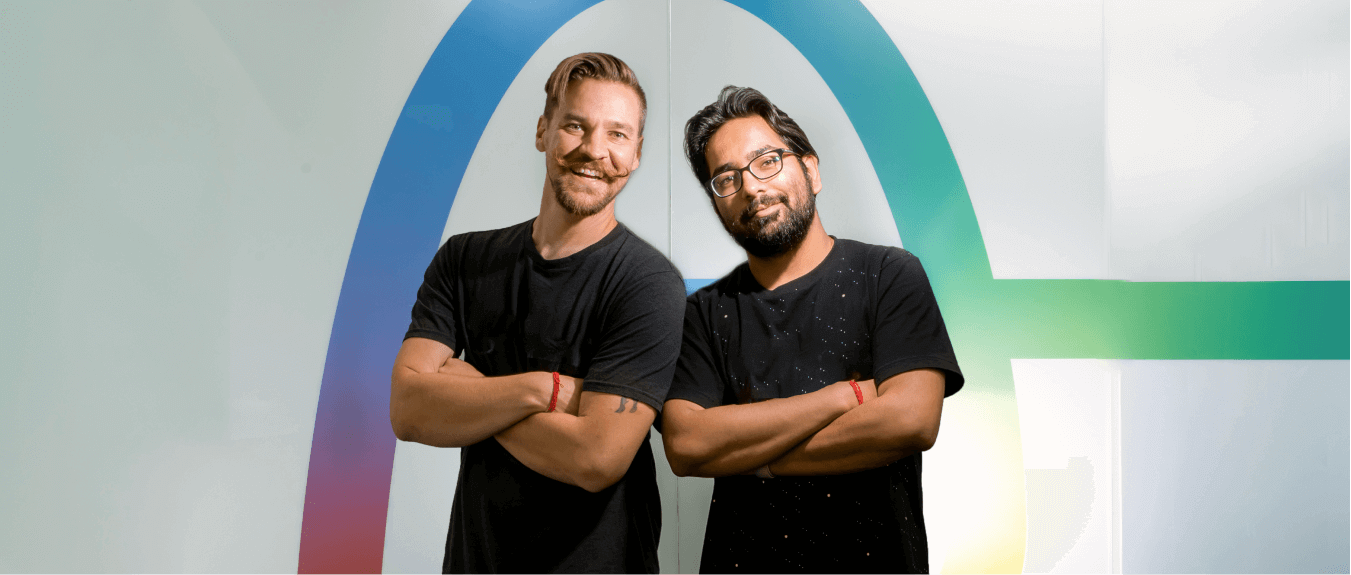
Together, Justin and Harshit have made Aftershoot what it is today – an AI-powered workflow supercharger that speeds up image selection and automates the editing process for over 60,000 photographers worldwide.
Harshit Dwivedi
Aftershoot CEO & Founder, New Delhi, India
Entrepreneur
Harshit is not a photographer (surprise-surprise). His roots lie in software development, having worked with Google, Udacity, and Redhat.
Even though Harshit wasn’t a photographer, he saw how much time and effort his photographer cousin put into culling a wedding.
His strong eye for tech and product enabled him to create an app that would solve an age-old problem for thousands of photographers – spending hours on post-shoot processes.
Harshit’s background in software development and passion for AI led him to develop a solution to his cousin’s problem. And so, the first version of Aftershoot came to fruition in 2020.
Watch this video where Harshit talks about how Aftershoot started and why he values its users so highly.
Justin Benson
Aftershoot Chief Innovation Officer, Connecticut, USA
Wedding Photographer
Justin’s photography career began in the film and television industry.
He started taking photos of interesting things he saw while working on TV shows from NBC and Warner Brothers, which quickly evolved into taking photos of sets and evolved from there.
It wasn’t until 2011 when a family friend needed a photographer for their last-minute wedding, that Justin discovered what he was meant to do.
From that wedding onward, he knew there was no place he would rather be than celebrating couples in love.
Justin entered the Aftershoot picture as one of the app’s early adopters.
From the very beginning, Aftershoot has valued input and feedback from its users. Justin was not shy in letting the team know where he saw room for improvement and what his ultimate vision for Aftershoot was.
Due to his invaluable ideas and dedication to helping shape the future of Aftershoot, Justin soon joined Harshit as Co-founder and is now Chief Innovation Officer.
Watch this video to hear firsthand how Justin’s journey with Aftershoot began.
Types of AI Software in Photography
Let’s start by understanding the spectrum of AI in the photography industry.
There are two types of AI software in photography: pattern recognition AI & generative AI
Knowing what these two categories entail will help you understand the impacts these AI tools have on photography and your creative processes.
Generative vs. Pattern Recognition AI

In short, generative AI creates new content, while pattern recognition AI identifies patterns in existing data.
Generative AI
It is an approach where the AI system learns from data and then generates new content based on that learning. It can create new and original things that it has never encountered before.
Generative AI opens the door for creative exploration by allowing you to generate content and manipulate imagery, thereby expanding artistic possibilities.
Examples: Adobe Photoshop’s Generative Fill tool and Midjourney.
Pattern Recognition AI
This AI focuses on recognizing and identifying patterns in data. It analyzes the given information and looks for similarities or regularities to make predictions or classifications based on those patterns.
This type of AI software helps you automate tasks such as image culling, sorting, selection, and editing, providing efficient and time-saving solutions.
Example: Aftershoot uses pattern recognition AI to speed up culling and editing for photographers.
Both pattern recognition and generative AI have revolutionized the way photographers work, boosting efficiency and expanding creative horizons.
However, with powerful AI software comes powerful opinions about how and when to use them, and the overall impact they have on photographers and their work.
Addressing Fears & Hesitations About AI in Photography
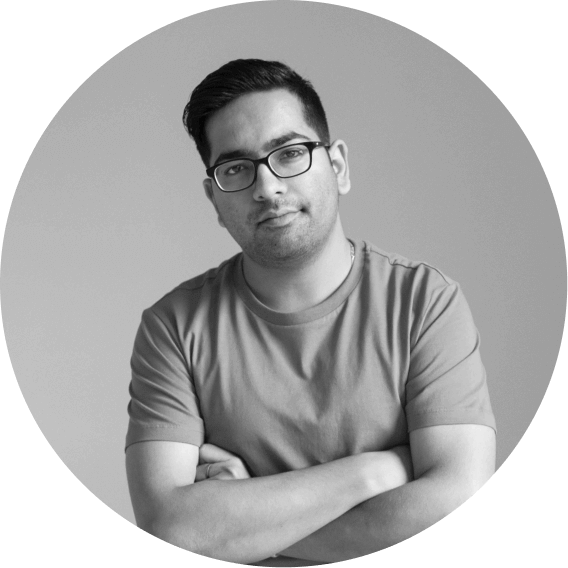
"Hesitations are always there when a new technology is unveiled. And it mostly stems from people misunderstanding the strengths and weaknesses of the technology, and instead, planning terminator-esque scenarios in their minds."
Harshit Dwivedi
Fear #1: AI will replace me
Many photographers are concerned about AI replacing them or making their skills irrelevant.
While AI brings numerous benefits to photographers, Justin reminds you never to lose sight of the importance of the human touch in the art of photography.

"Fortunately, most aspects of photography are safe. Some will feel some pains for sure, but the vast majority of us capturing emotion and moments are not going to be replaced any time soon."
Justin Benson
AI tools aren’t going to replace your vision and intuition but will instead amplify and support your creative process.
Photography is ultimately about capturing emotions, telling stories, and creating meaningful connections.
AI can assist in the technical aspects, but your perspective, composition, and ability to connect with the subject make a photograph truly special.
Fear #2: I don’t want to lose control
As a photographer, the last thing you would want is to lose control over your creative process.
The thought of relinquishing your personal touch and style can be unnerving, leading to apprehension about relying on AI algorithms for tasks like image selection and editing.
However, you can rest assured that AI is a tool meant to enhance your creativity, not replace it.
By leveraging AI software effectively, you can maintain complete control over the artistic direction of your work while using AI as a valuable assistant in your post-shoot processes.
In fact, one of our Aftershoot users, Rachel Devine of Sesame Ellis Photography, shared her initial hesitation about using Aftershoot to cull her images because she didn’t want to lose control.
She experienced a transformative shift when she saw how fast and effectively Aftershoot’s AI algorithms could cull her images, while still giving her full control over the final selections.
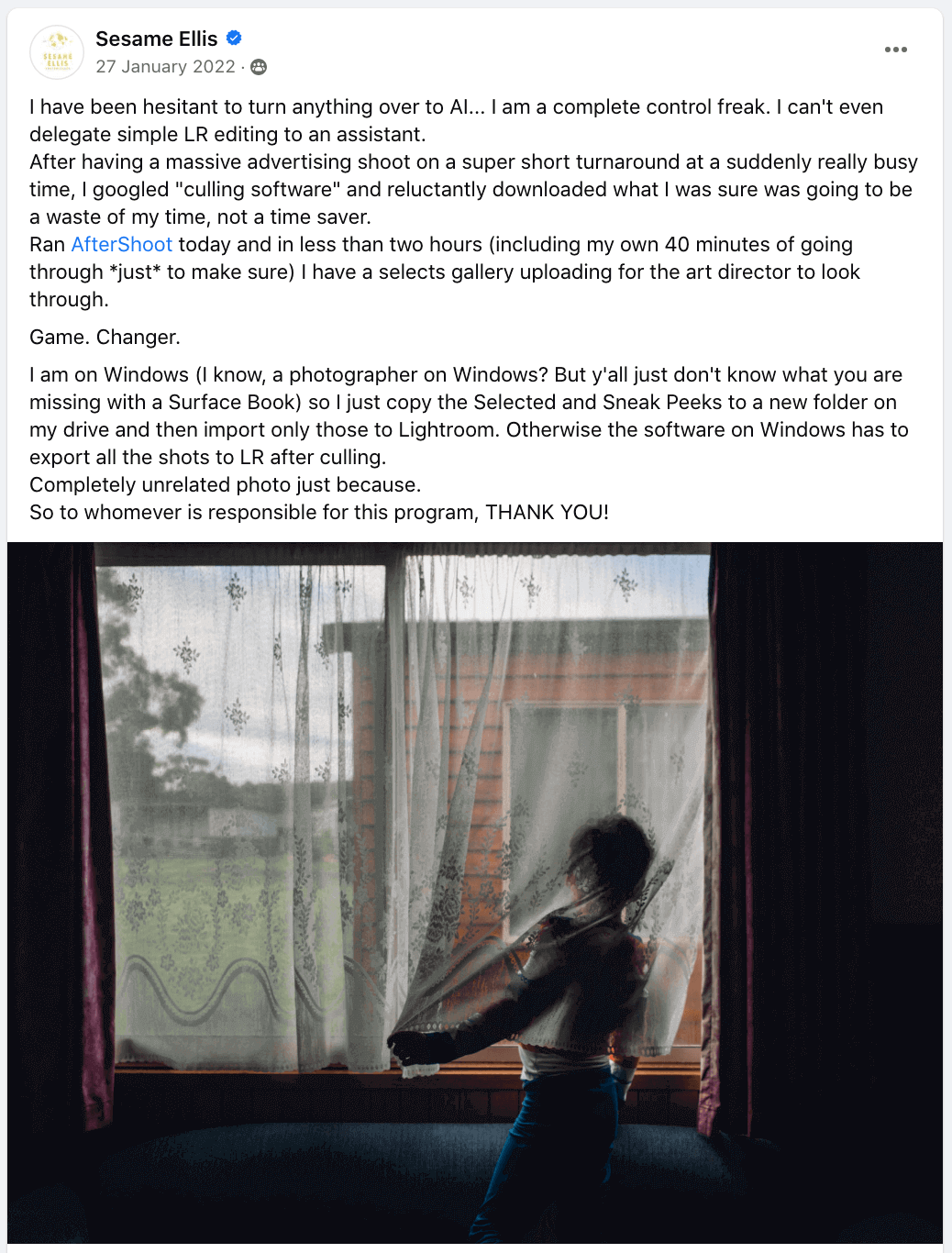
Fear #3: I will lose my originality
Have you ever thought, at what point does automation stop my creative process?
When it comes to generative AI tools, you might fear that they will create similar-looking photos or apply generic filters/presets, thereby diluting the uniqueness of your work.
Remember, while AI software can automate certain tasks, YOU ultimately retain the ability to infuse your unique style and vision into your work.
AI tools are designed to support photographers without infringing on their creative authenticity.

“This is why we designed all of our Aftershoot tools to really help the photographer and not take creativity out of their hands. There are choices that a photographer will make that AI just cannot do. There's no pattern, there’s no rhyme or reason, it’s just pure creativity and passion.”
Justin Benson
In the end, AI is an assistant that promotes creativity. It helps photographers by taking care of small, less important decisions, allowing them to focus on the creative aspects.
Don’t forget the huge significance of human involvement and decision-making!
Justin says, “AI is such a valuable tool. The keyword here, though, is it’s a tool. It's not your replacement, it's an enhancement to you.”
Fear #4: The learning curve
Adapting to new tools and techniques can feel overwhelming, and having to invest significant time and effort may be offputting to you.
While it's true that mastering new AI tools will require some initial investment of time, here's the silver lining: these tools are designed to be time savers in the long run.
The primary purpose of leveraging AI software is to accelerate and streamline processes such as culling and editing, empowering you to regain and even surpass the time you initially invested.
Luckily, there are many resources to help flatten the learning curve, such as video tutorials, online communities (like our Aftershoot Facebook Group), and workshops.
If you’d like to learn more about how Aftershoot works with step-by-step guides, check out our Aftershoot Academy videos on YouTube. They’re available in English and Spanish and the library keeps growing.
Don’t fear the learning curve – the rewards of efficiency and productivity outweigh the effort it takes to learn how to use new software.
How to Overcome Hesitations About AI
- You need to strike a balance between the convenience AI tools provide and your artistic vision.
Experiment with different tools to see how AI transforms your workflow and life as a photographer. Play around and find the middle ground between AI assistance and your own creative input. - Leverage AI as a starting point – or simply as inspiration – and apply your creativity to customize and refine images to your liking.
Start with small steps, exploring AI-powered software that aligns with your specific needs, and gradually integrate it into your photography process. - Remember, AI software can learn from your creative input and replicate what you teach it, but it cannot replace your originality. It needs you to help you!
Embracing AI as a Photographer
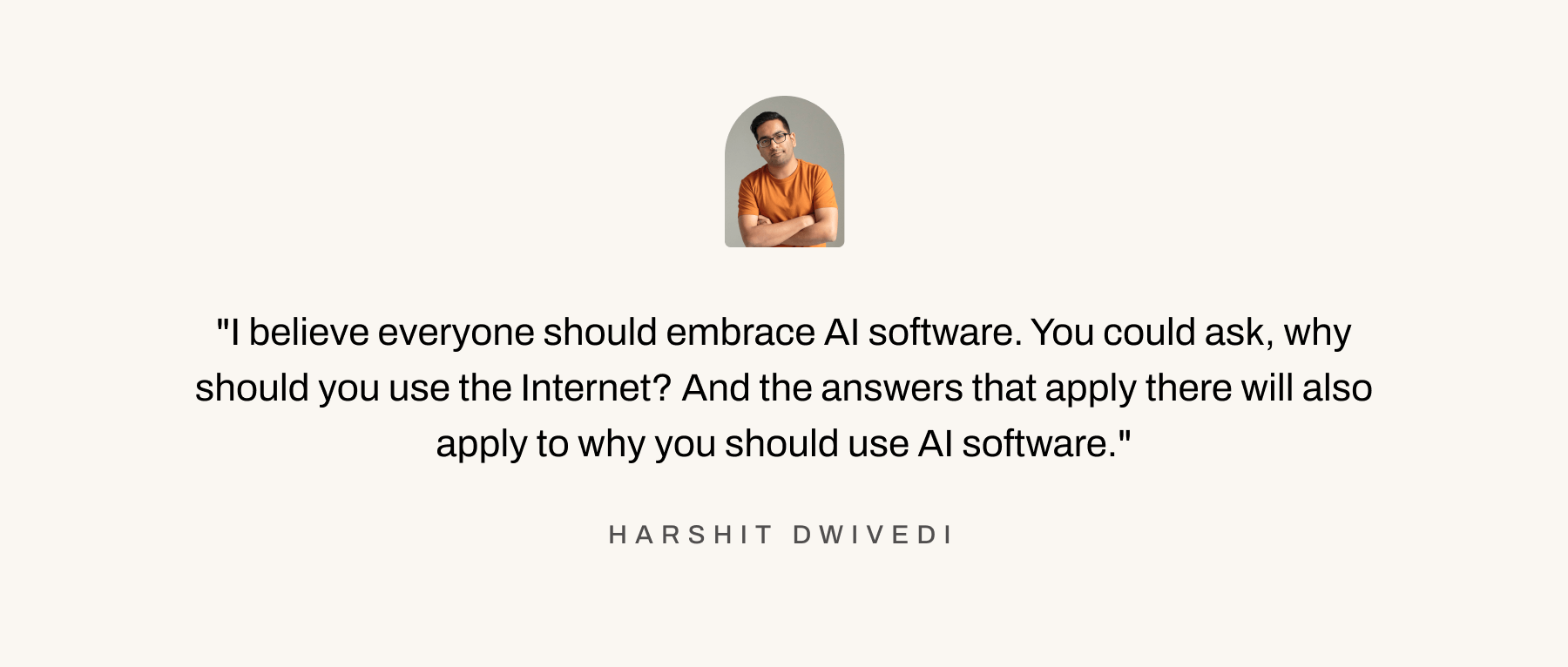
Just like Andrew Ng’s comparison between AI and electricity, Harshit believes in the universal applicability and transformative nature of AI technology.
Therefore, we encourage you to embrace AI as a powerful tool that will:
- Streamline your workflow
- Expand your creative possibilities, and
- Improve efficiency
BUT don’t fall into the trap of thinking AI software will do all of the above 100% perfectly right away.
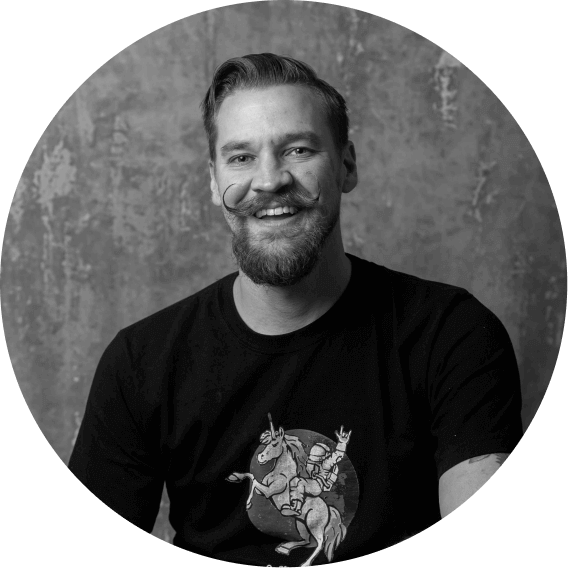
"If we were to talk about Aftershoot and what some people trying it out the first time might be missing is that when jumping in on AI culling, it's going to get some things wrong at first.
But if AI can get just 50% of it right, that means you have half the work to do.
Of course, the best thing about AI is that it learns from you. The more you use it, the better it gets.
That 50% may increase to 60, 70, 80, and more… to the point where culling photos for me is now 98.6% accurate.”
Justin Benson
Remember:
- While AI tools are valuable aids, they can never replace the innate creativity and magic that resides within every photographer.
- AI is not a threat; it's an opportunity to streamline your workflow and expand your creative horizons.
- You need to experiment with AI software and use it to your advantage. The more you use it, the more effective it will become in supercharging your photography workflow.
The Benefits of AI in Photography & Beyond
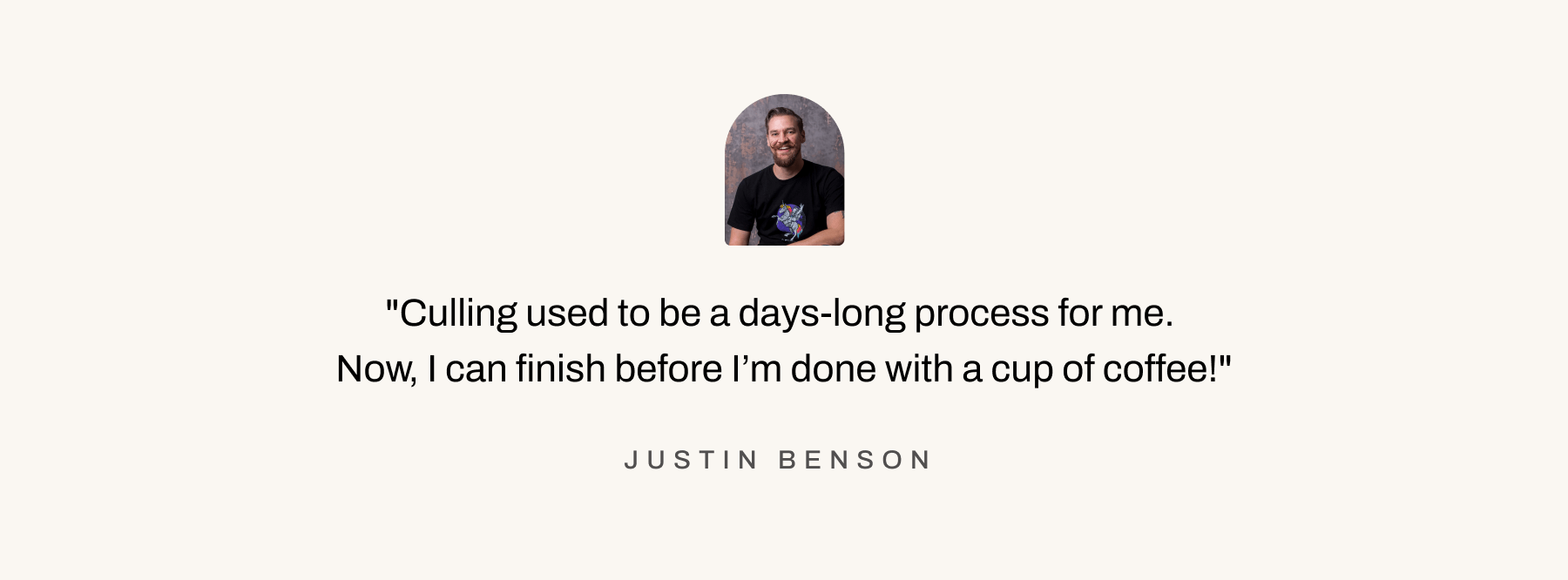
The major benefits of using AI software include:
- It saves time and increases productivity
- It can enhance your creative output
- It has wide-ranging applicability, including business benefits
- It can improve your mental well-being
Saving Time
The biggest and perhaps most obvious benefit of using any kind of AI software is that it saves you time.
Here’s what wedding photographer Lizz Krobath wrote about Aftershoot’s time-saving benefits.
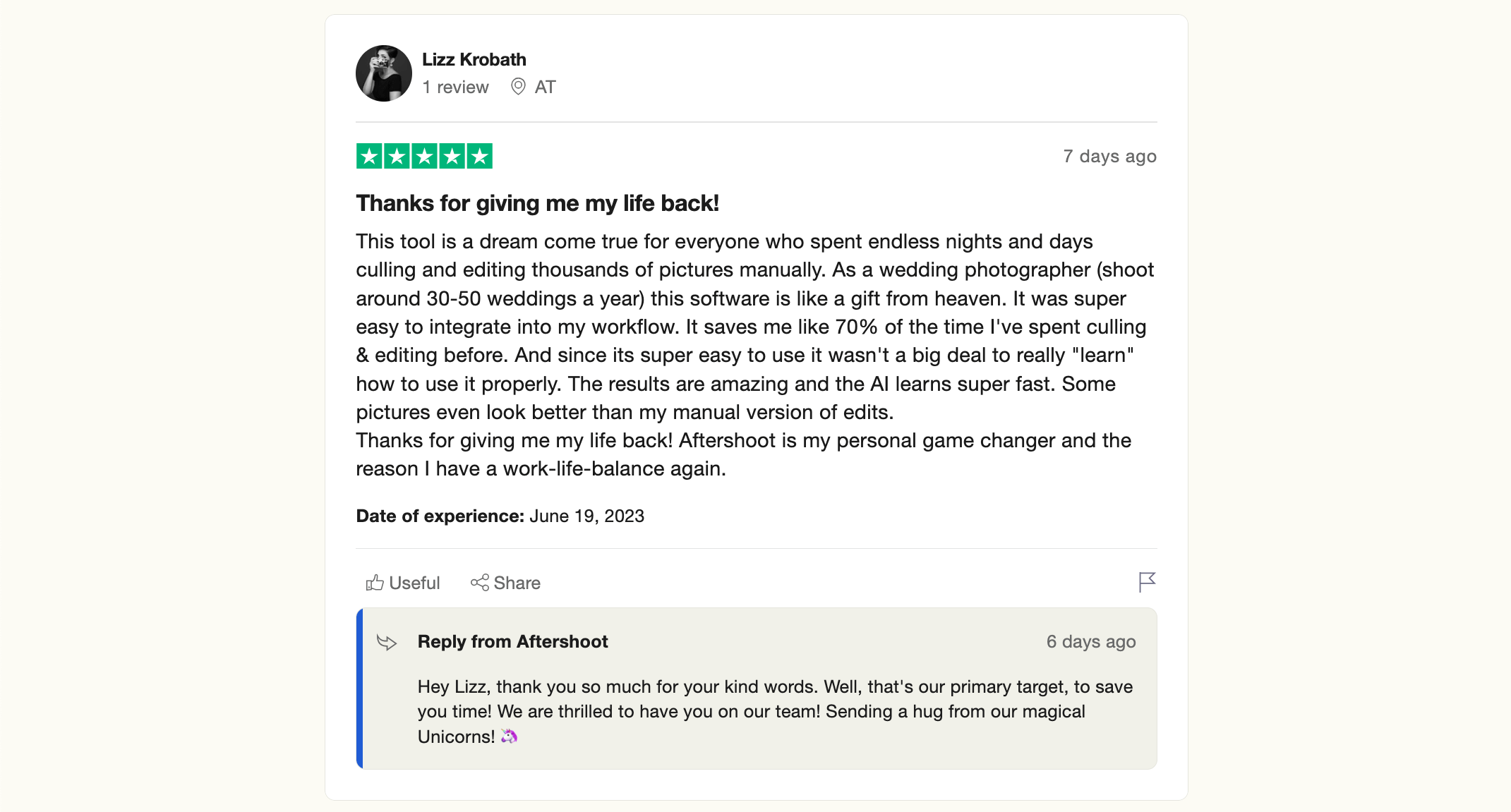
AI tools make our lives easier, more efficient, and more productive by speeding up whichever process we use them for – whether that is for photography or not!
Think about speeding up client email management, social media and blog content creation, or post-shoot processes like image organization, selection, and editing.
AI software helps you do all that and more!
Enhancing Creative Output
When it comes to image editing, AI's ability to learn and adapt enables photographers to create custom presets and styles that align with their unique vision and apply them effortlessly to their entire photo collection.
AI can also help you overcome technical limitations and get the most out of your shoots.
For example, AI-powered software can improve image quality by reducing noise, enhancing sharpness, and balancing exposure.
This can help you salvage otherwise unusable shots and achieve professional-looking results even in challenging conditions.
AI tools such as Photoshop’s Generative Fill function open up new creative possibilities through features like object removal, background replacement, and artistic filters.
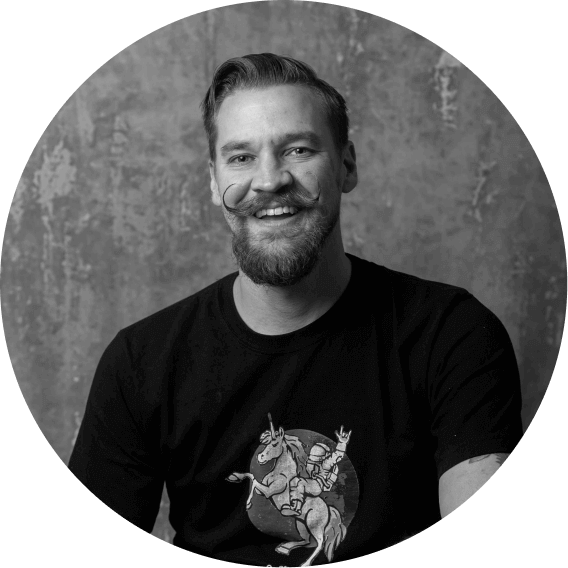
“I explore image generation sites to create backdrops for photos, and with Photoshop beta, I spend more time playing and enjoying my images."
Justin Benson
AI empowers you to experiment and explore different visual styles and techniques with ease, expanding your creative repertoire.
Business Benefits
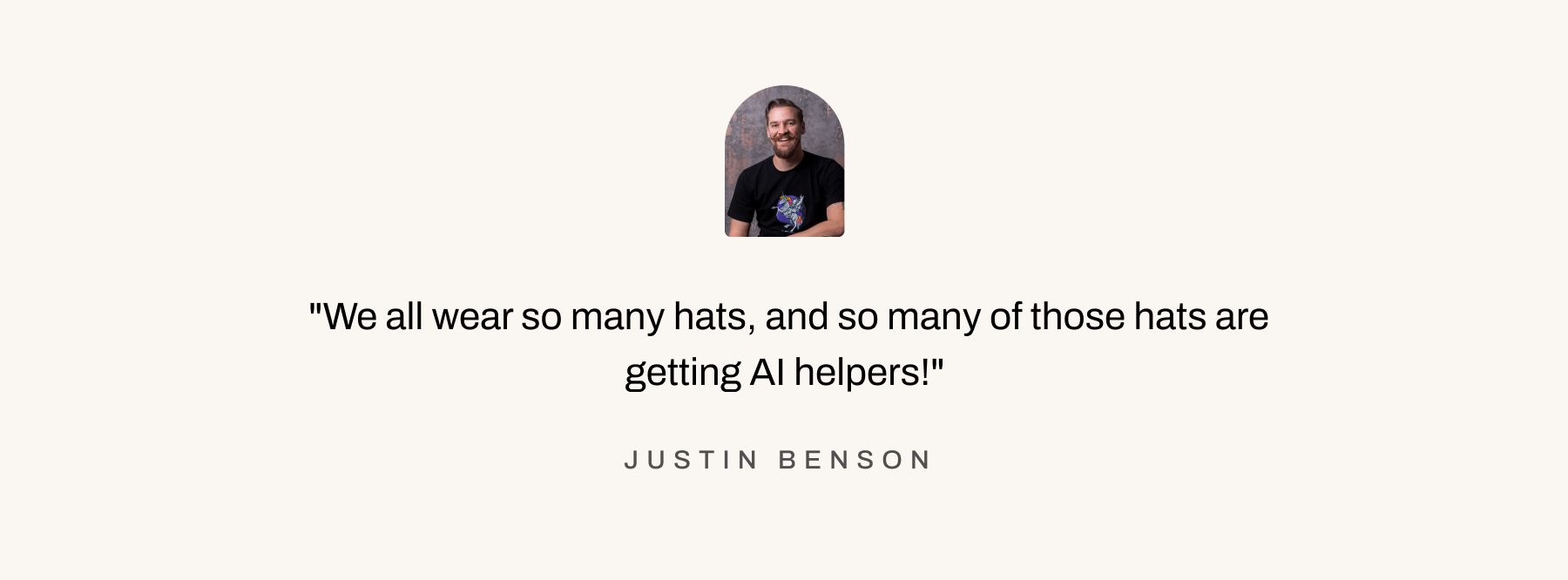
For Justin, a major benefit of AI software is the pivotal role it plays in shaping the future of how businesses function. It speeds up workflows, automates processes, and enables quicker responses to inquiries.
He adds, "The coolest part is that many companies, like our own, are letting users help shape and dictate how it works."
Running a business is becoming easier with the availability of AI-powered tools that aid communication, content creation, client management, and even website building.
Harshit uses tools like ChatGPT and Bard to help structure his emails and other outward-facing messages.
He says, "ChatGPT helps me be more productive. I still work insane hours but I feel like I get more stuff done and don’t procrastinate as much."
Additionally, he occasionally uses Github's Copilot to assist with debugging and coding tasks, tapping into his background as a developer.
We see the advent of AI software in photography and beyond as an opportunity for individuals to shape their industries and collaborate with AI.
The Personal Impact of AI Tools
Yes, AI tools are especially useful in your photography workflow and business.
But what about outside of work?
Justin recounts his personal journey with photography and AI to illustrate how AI transforms your personal life too.

“I started photography back in 2009. I photographed buildings and places in NYC, and then it turned to just driving around and finding landscapes and waterfalls to take photos of.
It was fun, exciting, and it was just a passion...
I photographed my first wedding in 2011 and fell in love with being a part of a couple's most important day.
By 2016 I was photographing 50+ weddings a year and loving it. One thing that really suffered, though, was that I stopped just going and taking photos for the enjoyment of it.
With clients waiting on photos, I stopped doing personal photography and it turned into 100% client-based photography. The last photo I took of my kids professionally was in 2018.
With Aftershoot culling and editing my photos, I broke a 5-year streak of not taking personal photos and really got to fall back in love with photography.
That's just an example of what it can do. What it really means is that my mental health has improved as a photographer.
I am no longer stressed or dreading emails from clients looking for photos.
My business has entirely changed and gone back into the realm of being a regular full-time job, not an overworked, constantly culling, editing, emailing-style job all day, every day.”
In photography, AI tools may serve the primary purpose of speeding up your workflow or enhancing your creative vision, but they can offer more than that – helping to prevent burnout and relieving stress to improve your physical and mental well-being.
The Future of AI in Photography

"Similar to how tools like your phone, the personal computer (and even digital cameras) have made our lives easier, AI is going to be the next breakthrough technology to do just that."
Harshit Dwivedi
We envision a future where AI continues to advance and redefine photography.
Harshit reminds us, “AI has always been there in photography – right from the face-detection tech built into your cameras to more recent trends in computational photography.”
He firmly believes that AI will further evolve and become even more integrated into the creative process, making people more efficient, thereby enabling them to make more money and produce more high-quality work.
Justin sees an incoming shift in how photographers enter the field and how images are created.

“Newer photographers will face a smaller barrier to entry to get started because AI tools will make it easier to correct errors or mistakes.”
Justin Benson
However, the most significant change AI will bring is speed. As society increasingly craves instant gratification, AI tools will allow photographers to achieve near-instant results.
Justin explains, "AI tools bring photographers closer to that instant reward, opening doors to positive reviews, upselling prints, and providing more time for personal enjoyment and self-expression."
AI tools will act as a catalyst for creativity and innovation, pushing photographers to explore new possibilities and push the boundaries of their craft.
The future of AI in photography promises a dynamic landscape where both accessibility and speed play integral roles in shaping the industry.
Final Thoughts
The future of photography is here, and it's fueled by AI.
The transformative power of AI software cannot be overstated. It serves as:
- A helpful assistant that saves you time
- A tool for creative expansion and experimentation
- An entry point for innovative business solutions
For photographers, AI tools like Aftershoot provide a helping hand to help them focus on what truly matters – capturing emotion, telling stories, and creating exceptional images.
AI software streamlines mundane tasks, freeing up valuable time for photographers to engage in high-impact activities and push their creative boundaries.

“For my own photography, my creative juices are flowing even more. Small, less important decisions are being made by AI, and my mental space and time have expanded so I can focus on creative decisions.”
Justin Benson
The fears and hesitations surrounding AI in photography are gradually fading away as photographers realize that AI is not here to replace them but to bolster their skills and amplify their potential.
It's an enhancement rather than a replacement, providing unprecedented speed, accuracy, and flexibility.
We invite you to embrace the incredible opportunities that AI presents.
Experience the time-saving benefits, enhanced mental and emotional well-being, and unleash your creative authenticity.
Don't let the fear of the unknown hold you back. Take the leap and witness the remarkable transformation AI can bring to your photography journey!
Ready to see first-hand how AI transforms your workflow?
Start incorporating AI into your photography workflow with Aftershoot: an intelligent companion that revolutionizes your culling and editing processes.
How much time you’ll save with Aftershoot

- Cull 1,000 images: 10 min 48 sec
- Edit 1,000 Images: 4 min 36 sec
- Total time it can save you per year: 1,140 hours
- That’s almost 50 days!
Start using Aftershoot for free for 30 days – no credit card details necessary.
We’re ready to support you every step of the way. Let AI be your ally, and let your creativity soar to new heights!

